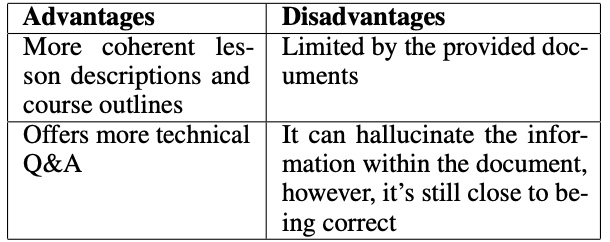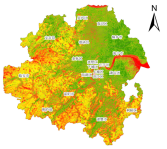目的
基于上一篇MINICPM-V2_6图像预处理流程-代码解读将输入图片得到了input_ids、attention_mask、pixel_values、image_sizes、image_bound、tgt_sizes,但是要怎么通过这些得到图片对应的embedding呢?
这里接着从MINICPM-V2_6入手,了解如何从图像得到embedding的过程
随机位置编码
Randomized Positional Encodings Boost Length Generalization of Transformers

因为图片的像素不统一,所以位置编码需要设置的比较大(L=2000)。假设图片对应的长度为N(N=40),训练阶段原本长度为N的序列对的位置序列是[0,1,⋯,N−2,N−1],现在改为从{0,1,⋯,L−2,L-1}中均匀地选N个点(0,50,100,。。。),作为当前序列的位置序列。这就解决了预测阶段的位置编码没有被训练过的问题。
这里的代码里用了这个思想,但是这里会复杂得多,因为这里是将2D的位置均匀的映射到[70*70]上面
代码
基本变量
import torch
from torch import nn
# 继承上篇的结果
# 图片块大小
tgt_sizes = torch.tensor([[28, 37],
[39, 26],
[39, 26]])
# 图片在inputs_id中的位置
image_bound = [torch.tensor([[ 18, 82],
[ 84, 148],
[150, 214]])]
# pixel_values,即最后得到的images
img1 = torch.randn(3,14,14504)
img2 = torch.randn(3,14,14196)
img3 = torch.randn(3,14,14196)
pixel_values_list = [[img1, img2, img3]]
max_patches = torch.max(tgt_sizes[:, 0] * tgt_sizes[:, 1])# 最大的块尺寸=28*37=1036,这里对应的是上一篇中的原始图片大小
# 将图片patch补齐到统一尺寸,作为一个batch
all_pixel_values = []
for pixel_values in pixel_values_list:
all_pixel_values.extend([i.flatten(end_dim=1).permute(1, 0) for i in pixel_values])
# pixel_values[0] 3*14*14504
# i.flatten(end_dim=1) 把前两维铺平 42,14504
# i.flatten(end_dim=2) 把前三维铺平 609168
# i.flatten(end_dim=1).permute(1, 0) 转置 14504,42
# all_pixel_values包含三个矩阵[14504*42,14196*42,14196*42]
all_pixel_values = torch.nn.utils.rnn.pad_sequence(all_pixel_values, batch_first=True, padding_value=0.0)# [3, 14504, 42] 会将不够的位置后面补齐0,这里的3指的是
B, L, _ = all_pixel_values.shape
all_pixel_values = all_pixel_values.permute(0, 2, 1).reshape(B, 3, -1, L)# [3, 3, 14, 14504] 第一个3是图片数量,第二个3是通道数,14是patch_size,14504是最大的块尺寸*14
# 因为有些patch的像素点是经过pad的,所以需要找到哪些块是经过pad的
patch_attn_mask = torch.zeros((B, 1, max_patches), dtype=torch.bool)# 3,1,1306
for i in range(B):# 将图片块的位置填充为True
patch_attn_mask[i, 0, :tgt_sizes[i][0] * tgt_sizes[i][1]] = True
# 即第一张图片对应的patch_attn_mask[0,0,:]=True
# 第二、三张图片对应的patch_attn_mask[1:,0,39*26:]均为False
到这里就得到all_pixel_values,patch_attn_mask, tgt_sizes
可以进行下一步去得到embedding了
函数定义
def get_embedding(all_pixel_values):
"""
输入:all_pixel_values 经过拼接后的像素点
输出:embeddings
demo:
batch_size = 3
num_channels = 3
patch_size = 14
h,w = 28,37
num = patch_size * h * w
all_pixel_values = torch.randn(batch_size, num_channels, patch_size, num)
embeddings = get_embedding(all_pixel_values)
# batch_size,1 * h * w,1152
"""
num_channels = 3
embed_dim = 1152
patch_size = 14
batch_size = 1
patch_embedding = nn.Conv2d(
in_channels=num_channels,# 3
out_channels=embed_dim,# 1152
kernel_size=patch_size,# 14
stride=patch_size,# 14
padding="valid",
)# 像素点到embedding的过程是通过这个卷积操作完成的
patch_embeds = patch_embedding(all_pixel_values)# patch_embeds是卷积后的patch [3, 1152, 1, 1036] 1036 = 14504/14 1 = 14/14
embeddings = patch_embeds.flatten(2).transpose(1, 2)# batch_size,1*1036,1152
# 到这里,像素点就完成了到embedding到过程
return embeddings
def get_position_embedding(all_pixel_values, patch_attn_mask, tgt_sizes):
"""
输入:all_pixel_values 经过拼接后的像素点
patch_attn_mask mask矩阵
tgt_sizes 图片尺寸大小
输出:位置embeddings
demo:
batch_size = 3
num_channels = 3
patch_size = 14
h,w = 28,37
num = patch_size * h * w
all_pixel_values = torch.randn(batch_size, num_channels, patch_size, num)
tgt_sizes = torch.tensor([[28, 37],
[39, 26],
[39, 26]])
patch_attn_mask = torch.zeros((B, 1, max_patches), dtype=torch.bool)# 3,1,1306
for i in range(B):# 将图片块的位置填充为True
patch_attn_mask[i, 0, :tgt_sizes[i][0] * tgt_sizes[i][1]] = True
embeddings = get_position_embedding(all_pixel_values, patch_attn_mask, tgt_sizes)
# batch_size,1 * h * w,1152
"""
embed_dim = 1152
num_patches_per_side = 70
num_positions = num_patches_per_side**2
position_embedding = nn.Embedding(num_positions, embed_dim)# 4900*1152
batch_size = all_pixel_values.size(0)# all_pixel_values原始图片大小 batch_size=3
max_im_h, max_im_w = all_pixel_values.size(2), all_pixel_values.size(3)# max_im_h=14,max_im_w=14504
max_nb_patches_h, max_nb_patches_w = max_im_h // patch_size, max_im_w // patch_size# 1 1036
position_ids = torch.full(
size=(
batch_size,
max_nb_patches_h * max_nb_patches_w,
),
fill_value=0,
)# 3,1 * 1036 全0
boundaries = torch.arange(1 / num_patches_per_side, 1.0, 1 / num_patches_per_side)
# 从1/70开始到1,间隔是1/70,共69个数,注意torch.arange是左闭右开的,不包含1
# [0.0143, 0.0286,...,0.9714, 0.985]
for batch_idx, p_attn_mask in enumerate(patch_attn_mask):
if tgt_sizes is not None:
nb_patches_h = tgt_sizes[batch_idx][0]# 28
nb_patches_w = tgt_sizes[batch_idx][1]# 37
else:
nb_patches_h = patch_attn_mask[:, 0].sum()
nb_patches_w = patch_attn_mask[0].sum()
fractional_coords_h = torch.arange(0, 1 - 1e-6, 1 / nb_patches_h)# 生成从0到1 - 1e-6,间隔是1 / nb_patches_h,共28个数
fractional_coords_w = torch.arange(0, 1 - 1e-6, 1 / nb_patches_w)# 生成从0到1 - 1e-6,间隔是1 / nb_patches_w,共37个数
bucket_coords_h = torch.bucketize(fractional_coords_h, boundaries, right=True)
# 从boundaries中找到fractional_coords_h该差值的地方
# 根据boundaries序列返回fractional_coords_h中每个元素的区间索引
# boundaries = [0.0143, 0.0286, 0.0429, 0.0571, 0.0714, 0.0857, 0.1000, 0.1143, 0.1286...]
# fractional_coords_h = [0.0000, 0.0357, 0.0714, 0.1071, 0.1429, 0.1786, 0.2143, 0.2500, 0.2857...]
# 0.0000<0.0143,找到索引0
# 0.0286<0.0357<0.0429,找到索引2
# 0.0714=0.0714<0.0857,找到索引5
# 0.1000=0.1071<0.1143,找到索引7
# [ 0, 2, 5, 7, 10, 12, 15, 17, 20, 22, 25, 27, 30, 32, 35, 37, 40, 42, 45, 47, 50, 52, 55, 57, 60, 62, 65, 67]
bucket_coords_w = torch.bucketize(fractional_coords_w, boundaries, right=True)
# [ 0, 1, 3, 5, 7, 9, 11, 13, 15, 17, 18, 20, 22, 24, 26, 28, 30, 32, 34, 35, 37, 39, 41, 43, 45, 47, 49, 51, 52, 54, 56, 58, 60, 62, 64, 66, 68]
pos_ids = (bucket_coords_h[:, None] * num_patches_per_side + bucket_coords_w).flatten()
# bucket_coords_h[:, None] * num_patches_per_side得到0 140 350...
# bucket_coords_h[:, None] * num_patches_per_side + bucket_coords_w
# [ 0, 1, 3, ..., 64, 66, 68],
# [ 140, 141, 143, ..., 204, 206, 208],
# [ 350, 351, 353, ..., 414, 416, 418] 。。。
# (bucket_coords_h[:, None] * num_patches_per_side + bucket_coords_w).flatten()得到
# tensor([ 0, 1, 3, ..., 4754, 4756, 4758])
# 这样把位置id就映射到4900上了
position_ids[batch_idx][p_attn_mask.view(-1).cpu()] = pos_ids
# 这个看起来复杂的过程是将[28,37]找到对应的位置id
# 这里使用的是随机位置编码的方法
# 这里是将2D均匀映射到[70,70]上面
"""
tensor([[ 0, 1, 3, ..., 4754, 4756, 4758],
[ 0, 2, 5, ..., 0, 0, 0],
[ 0, 2, 5, ..., 0, 0, 0]])
"""
embeddings = position_embedding(position_ids)# 3,1036,1152
return embeddings
函数调用
ori_embeddings = get_embedding(all_pixel_values)# batch_size,1 * h * w,1152
pos_embeddings = get_position_embedding(all_pixel_values, patch_attn_mask, tgt_sizes)# 3,h*w,1152
embeddings = ori_embeddings + pos_embeddings# 3,h*w,1152
额外说几句
为什么这里得到pos_ids会这么复杂呢?
将2D的[h,w]对应到2D的[70,70],按照我一开始想的,那将[h,w]拉平到h*w,直接映射到70*70多简单啊,但是看了代码就发现不是这么做的
代码中是将每一行单独映射到70,每一列也单独映射到70,这么说有点空
给个demo:
按照第一张图片的宽是37,高是28
每一行的尺寸是37,均匀映射到70对应的位置是[0 1 3 5 …]
每一列的尺寸是28,均匀映射到70对应的位置是[0 2 5 7…]
因为每一行都有70个位置,所以每一列的位置id都需要乘上70得到这一列的真实列位置id
[
0
2
5
7
.
.
.
67
]
∗
70
=
[
0
140
350
490
.
.
.
4690
]
\begin{bmatrix} &0\\ &2\\ &5\\ &7\\ &...\\ &67 \end{bmatrix} *70=\begin{bmatrix} &0\\ &140\\ &350\\ &490\\ &...\\ &4690 \end{bmatrix}
0257...67
∗70=
0140350490...4690
那真实列id+每一行的映射id就得到了2D位置编码
[
0
140
350
490
.
.
.
4690
]
+
[
0
1
3
5
.
.
.
68
]
=
[
0
1
3
.
.
.
68
140
141
143
.
.
.
208
350
351
353
.
.
.
418
490
491
493
.
.
.
558
.
.
.
4690
4691
4693
.
.
.
4758
]
\begin{bmatrix} &0\\ &140\\ &350\\ &490\\ &...\\ &4690 \end{bmatrix} +\begin{bmatrix} &0 &1 &3 &5 &... &68 \end{bmatrix}=\begin{bmatrix} &0&1&3&...&68\\ &140&141&143&...&208\\ &350&351&353&...&418\\ &490&491&493&...&558\\ &...\\ &4690&4691&4693&...&4758 \end{bmatrix}
0140350490...4690
+[0135...68]=
0140350490...46901141351491469131433534934693...............682084185584758
将这个位置编码拉平就是pos_ids了,随后就可以根据pos_ids得到对应的位置编码了
参考
modeling_minicpmv
modeling_navit_siglip



















